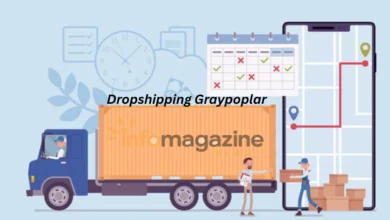
In the era of personalization, an automated customer journey is more than just a buzzword, it’s a necessity. Through the eyes of a customer, the journey with a brand is a set of steps each leading towards satisfaction and loyalty. If you get it right, you will reap the rewards of engaged, satisfied customers. However, mastering this journey is no small feat but having a grasp of its automation process makes it achievable. Keep reading to explore more.
Understanding the Importance of Automating Customer Journey Orchestration
Today’s consumers expect seamless interactions with companies, desiring a uniform experience across all touchpoints. With automation, companies can deliver personalized experiences by tracking customer interaction points and analyzing their behavior. The automation of the customer journey is the cornerstone in achieving this.
The process of automation helps companies to orchestrate, synchronize, and automate interactions across various channels. Each step is considered an opportunity to enrich the customer experience.
Consistency and timeliness are yet another reason for the rising interest in automating customer journey orchestration. Automation ensures consistency in customer experience by providing the same brand voice throughout the journey, regardless of the means of communication.
Ultimately, with the customer journey orchestration, businesses are better positioned to our performance competition. It serves as a powerful tool in driving customer retention, loyalty, and growth.
Implementing Machinery in Customer Journey Orchestration
Getting started with automating the customer journey orchestration can be daunting. However, done the right way, it can lead to boosted customer satisfaction and increased return on investment. One needs to first evaluate the existing customer management system to see which aspect needs automation the most.
Next, the selection of the right technology is significant. The selected technology should be capable of integrating with existing systems, without causing disruption. Also, it should have the ability to learn and adapt based on customer behavior.
An imperative factor for businesses to consider is how the chosen machinery will fit and align with their strategy and objectives. Employing tools just for the sake of automation without strategic intent can lead to a loss of effort and resources.
Lastly, automation requires well-defined data governance. Businesses should be aware of data privacy and security regulations since leveraging customer data plays a central role in automation.
Key Elements To Consider in Automating Customer Journey Orchestration
A well-structured automation plan for customer journey orchestration should include multiple key elements. Understanding the customer journey map, for example, is necessary to plan the apt automation process.
An important area to focus on is omnichannel capabilities. Automated orchestration should be proficient in managing seamless customer experiences, regardless of the channel used. Whether offline or online, the experience needs to be of the same high quality.
A focus on real-time interactions and responses is another element to keep in mind. A robust technology should be capable of handling real-time interactions and providing immediate personalized responses.
Lastly, businesses should be geared towards growth. Automated customer journey orchestration should be scalable and flexible enough to accommodate changing business needs and escalating customer expectations.
Ensuring Effective Execution in Automated Customer Journey Orchestration
Executing automation in customer journey orchestration is a meticulous process. To ensure effectiveness, it is necessary to take a phased approach—from planning to implementation, and finally, to monitoring.
Organizations must prioritize building a robust customer journey map, implementing the right tools, and orchestrating the journey sequence. This can only be achieved if the vision and mission are clear and communicated across the teams involved.
Overall, automated customer journey orchestration provides a foundation for companies to deliver consistent, high-quality personalized customer experiences. It supports anticipation of customer needs, delivery of timely and tailored interactions, and the creation of long-term relationships, thereby maximizing business growth and returns.



